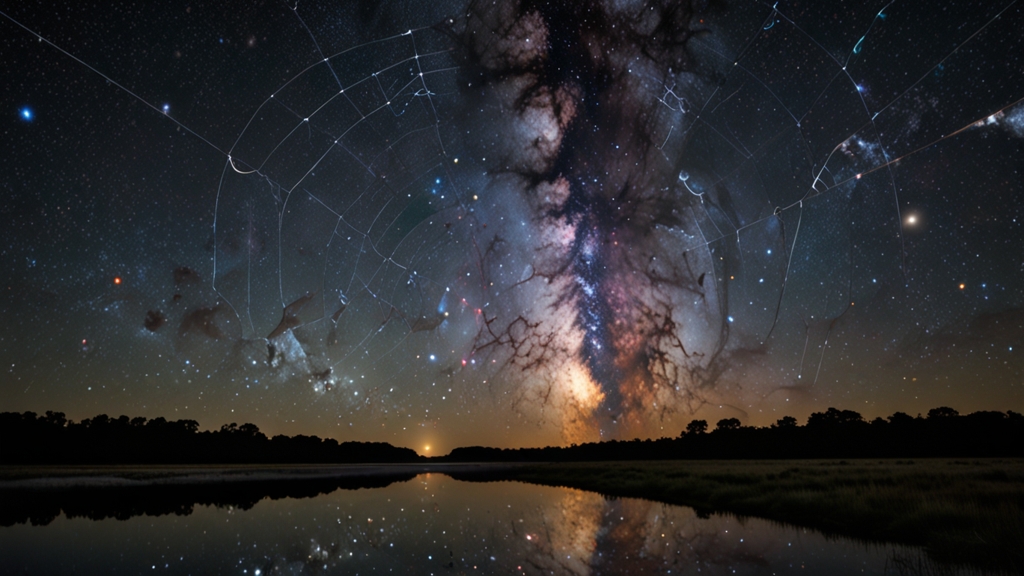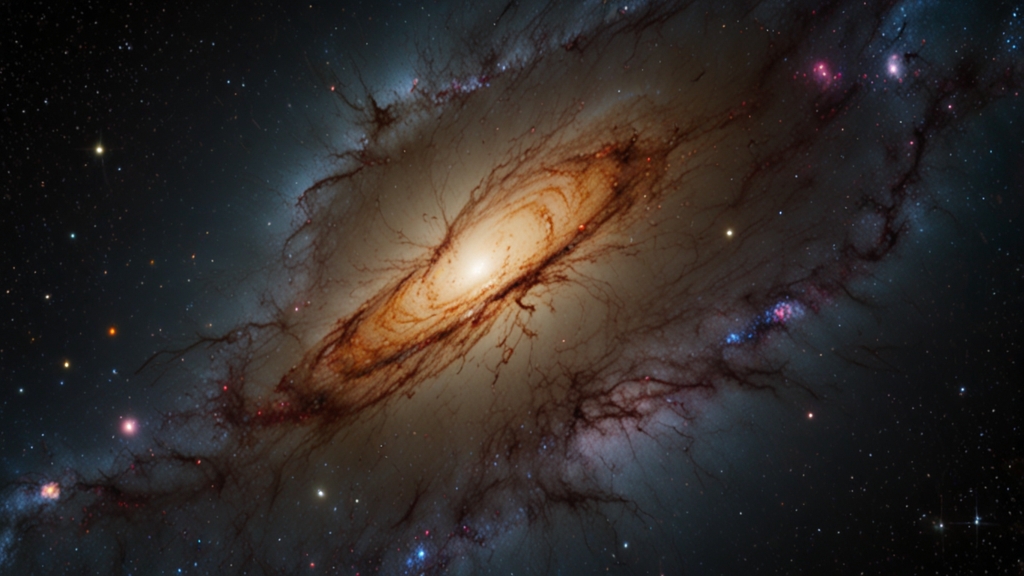The Cosmic Web: How Scientists Map the Universe's Largest Structures
As we gaze at the night sky, the stars and galaxies might seem like scattered, random dots of light. However, the universe has a hidden structure, a grand design far beyond our initial perception. This hidden framework is known as the "Cosmic Web," consisting of vast filaments of galaxies and dark matter stretching across the universe. But how do scientists map these colossal structures? In this article, we delve into the intricacies of this cosmic cartography.
Understanding the Cosmic Web
The term "Cosmic Web" refers to the large-scale structure of the universe, formed by the gravitational pull of matter. This network includes galaxies, galaxy clusters, and dark matter, connected by elongated strands called filaments. Between these filaments lie immense voids, regions with very few galaxies. The Cosmic Web essentially forms the skeleton of the universe, shaping its evolution and the distribution of galaxies within it.
Tools and Techniques for Mapping
Mapping the Cosmic Web is a monumental task, requiring advanced techniques and tools. One fundamental approach is using large surveys of galaxies. The Sloan Digital Sky Survey (SDSS) is a prime example, having mapped over a million galaxies. These surveys collect data that helps scientists plot the three-dimensional positions of galaxies, unveiling the web's complex structure.
Researchers also employ computer simulations to model the formation and evolution of the Cosmic Web. Simulations like the Millennium Simulation and Illustris project physics models to recreate the growth of structures from the early universe to the present day. By comparing these simulations with observational data, scientists refine their understanding of the Cosmic Web.
"Combining simulations with observational data gives us a detailed picture of the Cosmic Web. It’s like piecing together a giant cosmic puzzle," says Dr. Emily Moran, an astrophysicist at the University of California.
The Role of Dark Matter
Dark matter plays a crucial role in the formation of the Cosmic Web. Although invisible and undetectable through direct means, dark matter exerts gravitational forces that influence the motion of galaxies and the structure of the universe. It's estimated that dark matter constitutes about 85% of the universe’s total mass. By studying the Cosmic Web, scientists gain insights into the properties of dark matter and its impact on cosmic evolution.
Gravitational Lensing
Gravitational lensing is another key technique used to map the Cosmic Web. This phenomenon occurs when massive objects like galaxy clusters bend the light from more distant galaxies. By observing these distortions, scientists can infer the distribution of dark matter within these clusters. The Hubble Space Telescope has provided invaluable data for gravitational lensing studies, revealing intricate details of the Cosmic Web’s structure.
"Gravitational lensing allows us to 'see' dark matter indirectly. It’s like having a cosmic magnifying glass," explains Dr. Liam O’Shea, a researcher specializing in dark matter.
The Future of Cosmic Mapping
The quest to unravel the secrets of the Cosmic Web is far from over. Upcoming projects like the James Webb Space Telescope (JWST) and the European Space Agency’s Euclid mission are expected to revolutionize our understanding. These advanced observatories will provide unprecedented resolutions and deeper insights into the universe’s large-scale structures.
Moreover, artificial intelligence is playing an increasingly important role in cosmic mapping. Machine learning algorithms can analyze vast datasets from simulations and observations more efficiently, identifying patterns and structures within the Cosmic Web that might otherwise go unnoticed.
Conclusion
The Cosmic Web is a testament to the universe’s grandeur and complexity. Through innovative techniques and cutting-edge technology, scientists are steadily mapping these colossal structures, enhancing our understanding of the universe’s architecture. As we continue to explore, the Cosmic Web will undoubtedly reveal more of its secrets, offering profound insights into the nature of the cosmos.
"Mapping the Cosmic Web is like charting uncharted seas. Each discovery brings us closer to understanding the vast universe we inhabit," reflects Dr. Rebecca Lin, a cosmologist at the Max Planck Institute.
The ongoing efforts to chart the Cosmic Web not only unveil the universe's past but also guide us toward future explorations, promising a deeper appreciation of the cosmos and our place within it.








